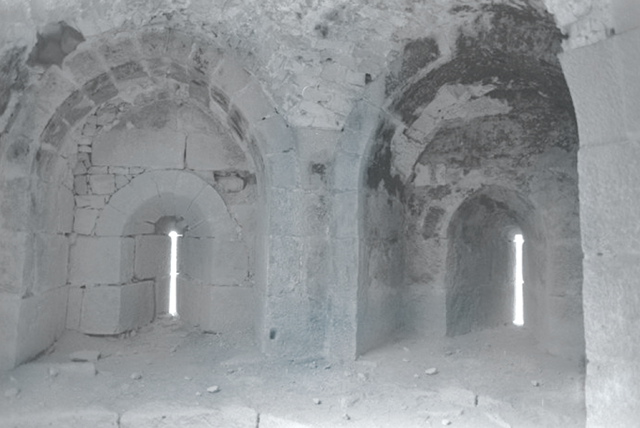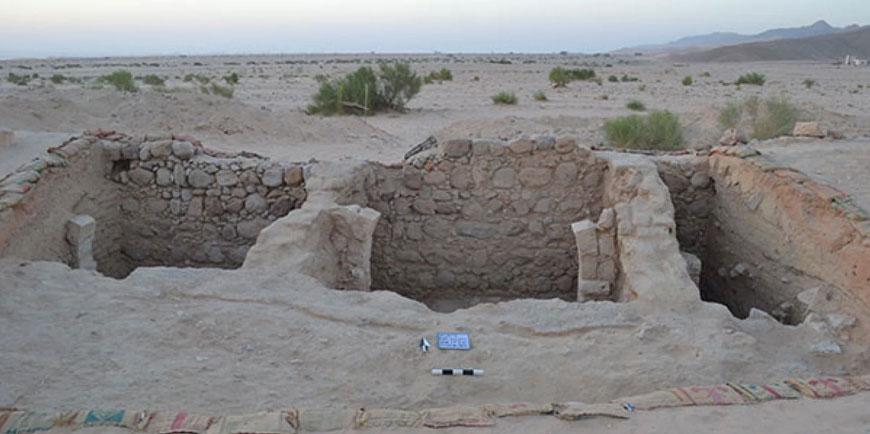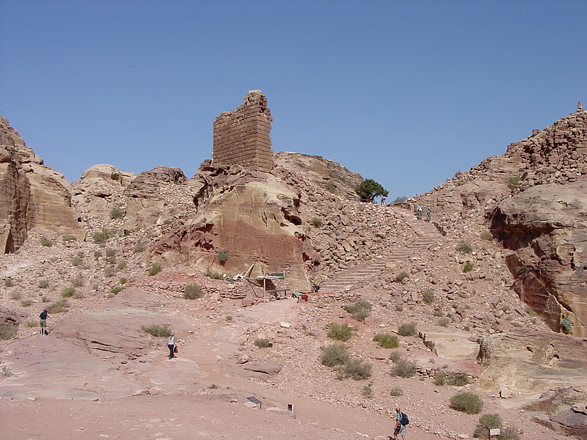You are here
Insights into Transjordan’s role during Middle Islamic Period
By Saeb Rawashdeh - Dec 17,2023 - Last updated at Dec 17,2023

The interior of the Montreal Castle in the southern Jordan (Photo courtesy of ACOR)
AMMAN — Southern Levant was in the Egyptian orbit around 884AD and it continued to be during the Middle Islamic Period (1000AD-1500AD). It has often been assumed that Transjordan had been a peripheral area during the Abbasid Period when Abbasids transferred the capital to Bagdad. With the expansion of Fatimid control in 970AD, it was characterised by building military outposts and forging tribal alliances.
According to a traveller Al Maqdisi( 945AD-991AD), the area of Jordan north of the Wadi Zarqa, then known as Jabal Jarash, was included in the district of Al Urdunn. Villages in that area provided olives, olive oil, fruits and honey.
“Around its principal town of Amman were villages, farms, grain fields, mills and flocks, and nearby was Kahf Al Raqim where pilgrims could visit the Cave of the Sleepers,” noted Alan Walmsley, who received his PhD at The University of Sydney.
Maqdisi identified Wadi Mujib, Zoara on the southern tip of the Dead Sea and towns like Maan, Udhruh and Ayla.
Ayla and Zoarawere thriving commercial centres while former was a significant port servig Palestine and Hijaz.
“From Zoara, roads continued to Jerusalem, Nablus and Amman. Another important road described by Maqdisi was the Hajj or pilgrimage route from Damascus, which passed through Adhriat and Zarqa to Amman, which was a major assembly place for pilgrims from Palestine, and continued south by way of two watering stops to Maan then Tabuk,” Walmsley elaborated.
Furthermore, south Jordan benefitted from the revival of the Red Sea trade routes under the Fatimid caliphs of Egypt, which found expression in the political events of the later 10th and early 11th centuries.
In this period, the tribal chieftains of south Palestine and Jordan played an active and sometimes counterproductive role, either as allies of or rivals to Fatimid dynasty.
“Following the imposition of Seljuq control over the Levant [1071AD–1079AD], the Arabic sources continued to refer to the old districts of Balqa, Maan, Jibal and Sharah, but within these districts political power had already shifted to other population centres particularly Wadi Musa [for Sharah] and Karak [for Maab]. Accordingly, Crusader sources identify Wadi Musa, ancient Petra, as the principal object of military activity south of the Dead Sea during the first quarter of the twelfth century,” Walmsley noted.
The first Crusader expedition to Transjordan took place in 1100AD when Baldwin I (ruled1100AD–1118AD) lead a campaign across the Jordan, reaching Wadi Musa by way of Zoara south of the Dead Sea, and after staying three days and visiting the monastery of St Aaron on Jabal Harun, Baldwin returned to Jerusalem by the same route.
Baldwin was unable to fully secure control on the East Bank, but in 1106AD-1107AD managed to rebuff Seljuq troops from Damascus.
In 12th century Transjordan was under the jurisdiction of the Atabeg of Damascus, but in 1111AD the Crusaders under Baldwin had deeply penetrated this territory and established a permanent presence, although the extent to which these moves were supported by the local Christian population is unclear, Walmsley underlined, adding that the Latin kings of Jerusalem now set about consolidating their control over the Jordan River, and were particularly successful in the south away from Damascus.
Because of the further confrontation, Baldwin established Montreal in 1115AD and from the castle in Shobak they dominated the southern Transjordan, including Ayla.
“Shortly after, in 1120AD, Tughtigin built a castle at Jerash to enforce his interests in Jabal Awf, but this was destroyed in the following year by a Crusader raid under Baldwin II [ruled 1118AD — 1131AD],” Walmsley said, adding that the Middle Islamic and Crusader Periods were marked by huge castles build of large square stones.
Related Articles
AMMAN — The Iqlim Fahl was one of the many districts that constituted the extensive Mamlakat Dimashq in Bilad Al Sham during the Mamluk peri
AMMAN — Gharandal is situated some 15 kilometres southeast of Tafila and some 5 kilometres of the Edomite site of Bozra, modern Busayra.
For the past decades, the University of Florence has been very active in Jordan, and its project Mediaeval Petra: Archaeology of the Crusade

















